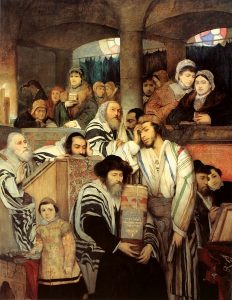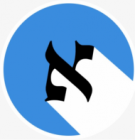Today at sunset will be the tenth of the Hebrew month of ‘Tisheri’ {תשרי} and this signifies the beginning of the HOLIEST day of the Jewish year – ‘Yom Kippur.’ {יום כיפור}
It is customary to translate ‘Yom Kippur’ as the ‘Day of Atonement’ and it comes from the following biblical verse:
“And the LORD spoke to Moses, saying, “Now on the tenth day of this seventh month is the Day of Atonement. It shall be for you a time of holy convocation, and you shall afflict yourselves and present a food offering to the LORD. And you shall not do any work on that very day, for it is a Day of Atonement, to make atonement for you before the LORD your God.” (Leviticus 23:26-29)

The initial Hebrew meaning of the root ‘K-P-R’ {כ-פ-ר} – which ‘Yom Kippur’ comes from – actually means ‘to cover’ and can be found in the original Hebrew name for the ‘Mercy Seat’ of the ‘Ark of the Covenant’ which is called in the Hebrew Bible ‘Kaporet’ {כפורת} (‘covering’).
The concept of ‘covering’ in Biblical Hebrew can be understood also in an abstract way as ‘covering sins’ – meaning ‘to grant atonement.’ Precisely as the English name for the holiest day in the Jewish calendar – ‘ Day of Atonement’ (‘Yom Kippur’) and sheds light on the decision to translate into English the Hebrew word ‘Kapporet’ (the covering of the Ark) as ‘Mercy Seat.’
Both of these Hebrew terms (‘Yom Kippur’ and ‘Kapporet’) are strongly connected and not just grammatically. The Ark of the Covenant was placed in the holiest place in the Temple – the ‘Holy of Holies’ which was strictly forbidden to enter EXCEPT for by the High Priest and only on the holiest day in the Jewish calendar – ‘Yom Kippur’ – which is taking place today in the evening.
In fact, ‘Yom Kippur’ represented in the Jewish culture of the First Temple period the culmination of ‘holiness’ due to the rare CONVERGENCE of the THREE following factors: the High Priest (the holiest position) entered the ‘Holy of Holies’ (the holiest place) on ‘Yom Kippur’ (‘the holiest day).
If you have a chance to be in Israel on ‘Yom Kippur’ you will discover that the ‘holy atmosphere’ of this day is still in existence. It is the ONLY day of the year in which EVERYTHING entirely stops – there are no cars on the roads, ALL shops are closed and even the international airport and seaports of Israel are completely shut down.
‘Yom Kippur’ is a day of self-examination. It is a day for every person to stop everything in life and to take the time to think about the important things that usually we don’t have the time to think of during our everyday life.
‘Yom Kippur’ has a special – and VERY long – service at the synagogue which includes, among other things, the ‘Vidduy’ {וידוי} (Hebrew for ‘confession’) and the reading of the order of work of the High Priest at the Temple in Jerusalem, as was done during this day.
This day is one of the SIX fast days in the Hebrew calendar. However, ‘Yom Kippur’ is different than the other FIVE fast days (FOUR are about the destruction of the Temple in Jerusalem and one is the Fast of Esther) because in all of the other fast days we are fasting in order to commemorate events that took place in the PAST. However, on ‘Yom Kippur’ we are fasting for the FUTURE of ourselves.
Because this day is the ‘Day of the Verdict’ according to the Jewish tradition, this is the day that will determine what our lives will look like in the next year (until the next ‘Yom Kippur’). This is the reason for the unique greeting people greet each with other on ‘Yom Kippur’ – ‘Gemar Chatimah Tova!’ {גמר חתימה טובה} – which means ‘May you be signed and sealed in the Book of Life!’
Click here for Free Sample Study Materials